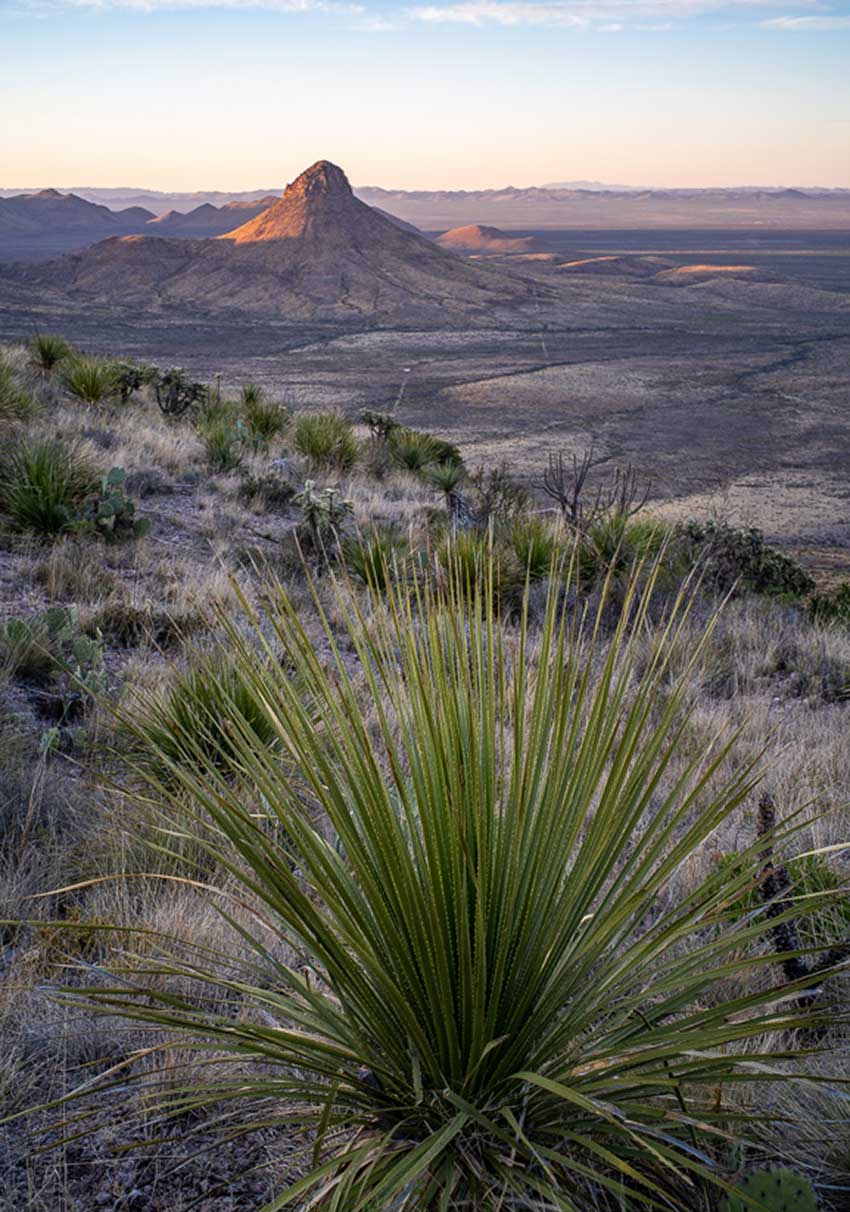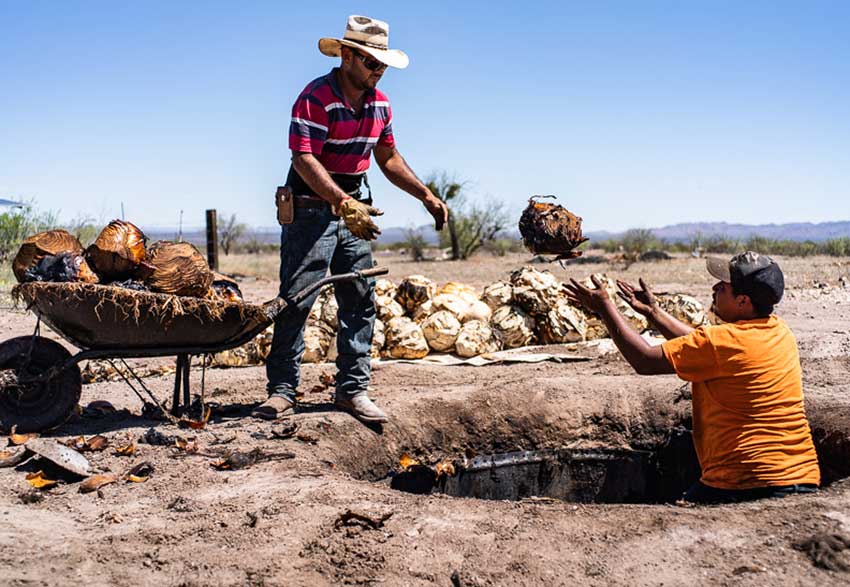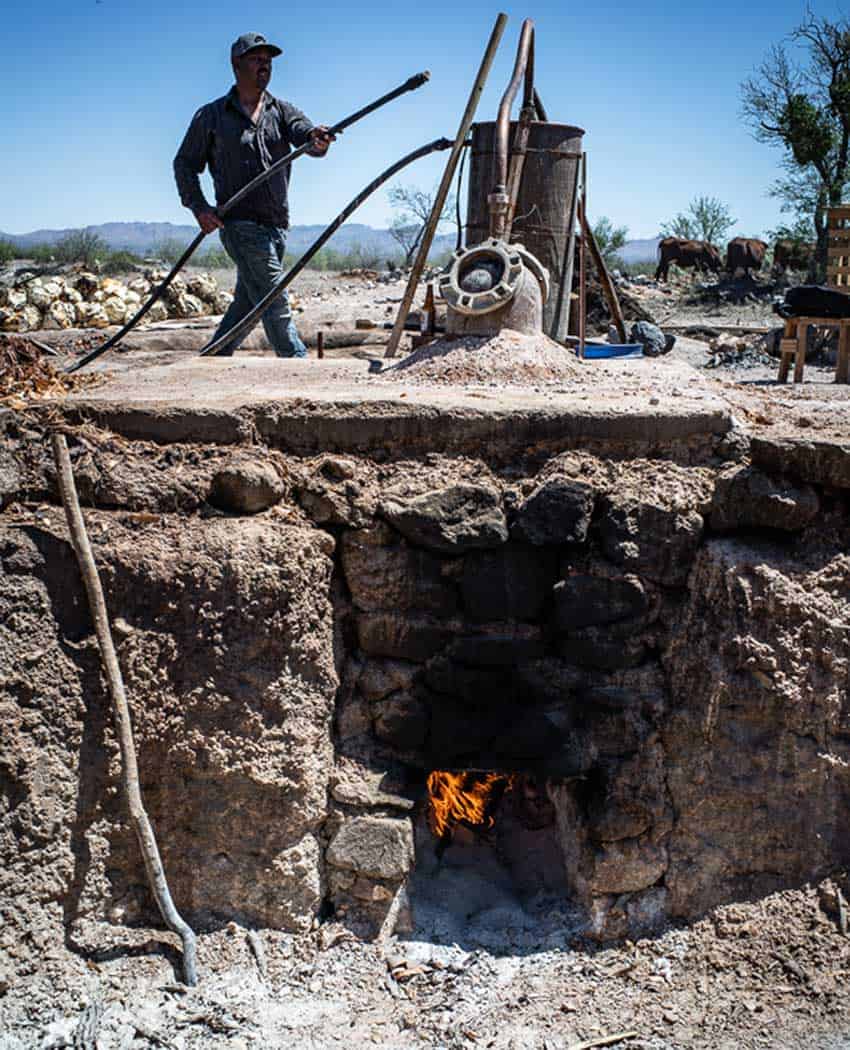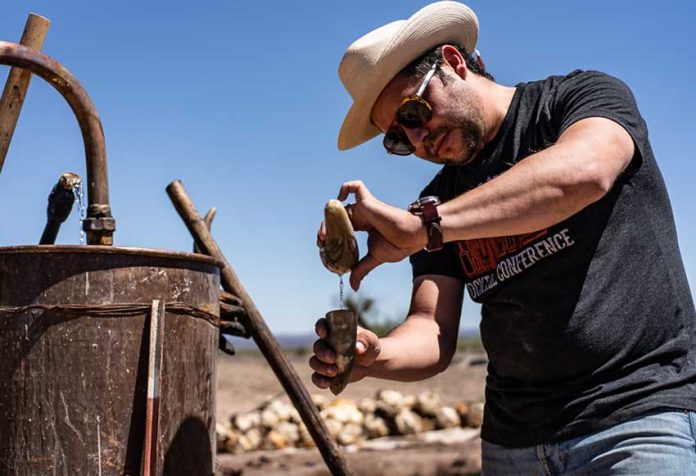The pickup truck rambles down a long rocky road. On both sides, a barren landscape stretches out as far as the eye can see, punctuated by the occasional yucca tree.
After seemingly forever, I arrive at a small outpost, the aroma of smoked wood thick in the air from pit ovens nearby. The intense desert sun beats down on Ricardo Pico and me as we hop out of the truck at the viñata, or sotol distillery, deep in the Chihuahuan desert.
Pico is the man behind Sotol Clande, one of the latest artisanal brands of sotol to emerge from Mexico. Born from deserts and dry forests of northern Mexico, the spirit brings smooth yet earthy flavours and a fascinating history to the table and bar.
While sotol has been around for more than 300 years, it has long been overshadowed by the more popular Mexican drinks tequila and mezcal. Why? Up until approximately 30 years ago, sotol production was prohibited, and the culture behind it nearly lost.
Today, a small group of enterprises, like Sotol Clande, are reviving sotol’s production and heritage and reintroducing it to the world.

Sotol was born during Mexico’s colonial era when the Spanish settlers used distillation techniques to get the “spirit” out of plants the indigenous people had already fermented. In the northern dry-lands and sierras of Chihuahua, this included the sotol or desert spoon plant.
Thus, sotol, like tequila and mezcal, embodies the mestizaje (mixing) process that gave birth to almost everything in Mexican culture. But interesting enough, this northern beverage’s fate was considerably marked by Mexico’s northern neighbour.
Sotol’s heyday likely came in the early 1930s when over 300,000 liters per year were made, most of it destined for the United States to quench the thirst of Americans parched by prohibition. Rumor has it that even the legendary gangster Al Capone smuggled sotol from Mexican border areas into the U.S.
The sotol boom didn’t last long as the Mexican government began a crackdown on artisan alcohol producers. At the time, the Mexican elites favoured European liquors such as whisky and brandy, eschewing locally-made beverages for alcohol they perceived as higher class.
Sotol got a reputation as a drink for peasants and drunks, and producers were persecuted, their stills often riddled by bullets. Occasionally they were even thrown in jail.
This persecution took its toll on the industry, and generations of knowledge and tradition were nearly wiped out. Only a few sotoleros, or sotol producers, persisted, moving around the countryside with their copper stills and donkeys, packing up their clandestine mobile operations and moving on when the government closed in.

However, with the lifting of prohibition in the early 1990s, sotoleros slowly started coming, quite literally, out of the desert. This has led to a renewed interest in the beverage, with both artisanal and industrial brands resurrecting the spirit and bringing it to the public.
***
“When we first started the Clande project, we wanted to rebuild the story of sotol,” Pico says. That story, forgotten by many urban residents of Chihuahua, lived on through the knowledge of just a handful of producers in rural communities around the state.
Pico estimates there are fewer than 30 sotoleros in all of Chihuahua and fewer than 10 in the neighbouring states of Durango and Coahuila.
These producers traditionally made sotol just for their local communities, where consumers are very knowledgeable about the final product. They can taste subtleties in the production process such as premature harvesting, overcooking, over-fermenting and adulteration with agaves and sugar cane.
The communities, along with the master sotoleros’ knowledge, are vital components in the final product of a well-crafted sotol, argues Faridy Bujaidar Ávila. “It’s very important to highlight that artisanal sotol and industrial sotol are vastly different.”
According to Bujaidar, “[Artisanal producers] can’t adulterate it in any way because they have a direct relationship with their clients. However, when you try some industrial sotols, and you have an educated palate, you notice that they include sugar cane, which totally alters the flavour and greatly lowers the quality of the product.”

Bujaidar, who holds a masters in anthropology and researched sotol culture, stressed the importance of keeping the traditional methods alive. Although some producers have wanted to replicate the success of the more industrially produced tequilas, she feels that they lack the nuances and cultural richness that artisanally made liquors possess.
“It’s not just about the quality of the final product, but the traditional knowledge of the person who produced it, and of the communities that consume it.”
Pico seems to agree. His brand has a more anthropological vision, relying heavily on the expertise of the sotoleros he works with, most of whom have learned their craft from the generations before them.
***
At the viñata, I come to learn that this region was chosen for the distillery due to the abundance of the sotol plant nearby. We take a quick drive up to a viewpoint overlooking the desert. Off in the distance, mountains loom over the landscape, and to the northeast, the border with Texas. In front of us, hundreds, if not thousands of desert spoon plants are rooted to the ground, growing freely.
Although similar in appearance to an agave plant, the desert spoon is actually a member of the asparagus family. Its mute green leaves contain sharp teeth, which protect it from predators.
To make sotol, the hearts of the desert spoon are separated from the rest of the plant and roasted in an underground wood-fired pit for up to three days before being milled by hand and left to ferment in open-air vats. Following fermentation, the liquid is transferred to stills for distillation.
Pico pulls a small amount of the distilled liquid from a bucket made by master sotolero Don Eduardo Arrieta and his son, Eduardo. Passing the liquid rapidly between two horn-shaped vessels, he watches for how the liquid bubbles, an indication of the alcohol content of the first distillation. By distilling the sotol two or three times, they can achieve the desired alcohol content, usually around 50%.
While the roasting and knowledge of the sotoleros play a significant role in the taste of sotol, perhaps nothing is more important than the environment the plant grew in. “Terroir is very important to sotol,” Pico mentions. “Different experiences the plant has over 15 years, going through droughts, floods and other natural events, gives the final product a lot of its flavour.”
Many sotoleros prefer to produce blancos, as an unaged spirit retains more of the earthiness of the plant than their aged brothers reposados and añejos. Some craft distillers, such as master sotolero Geraldo Ruelas of Oro de Coyame, take their products a step further. Ruelas infuses some of his offerings with everything from almonds and pineapples to marijuana and rattlesnake meat.
I sample some of the varieties at Ruelas’ distillery in Aldama, just outside Chihuahua. Instead of the smokiness of mezcal or the bite of tequila, I find a smooth, easy-drinking liquor, with little alcohol aftertaste despite the 48% alcohol level. Each of the infusions adds a subtle touch of flavor to the sotol without distracting from the earthiness.
Long confined to being discretely sold directly from sotoleros such as Ruelas, sotol is now making its way into the tasting rooms of Chihuahua and cocktail bars around North America as an alternative to tequila and mezcal.
At the same time, the traditions and culture of a region are being renewed, and the story of sotol is being rebuilt.
